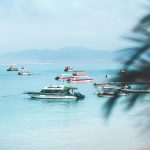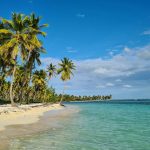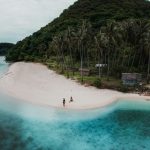Table of Contents
Skip the crowded beaches and tourist traps. Here’s your day-by-day guide on island hopping in Croatia like a local, complete with secret beaches, hidden konobas (taverns), and spots so special most travel guides don’t even mention them.
Day 1-2: Split – Your Gateway to the Islands
Start in Split, but not like everyone else does. Skip the obvious Diocletian’s Palace tours and head straight to the local fish market at dawn. Watch restaurant owners bid on the day’s catch, then grab breakfast at Lučac, where fishermen have been starting their days for centuries.
For the best experience, stay in the Varoš neighborhood instead of the touristy old town. The narrow streets and traditional stone houses offer a glimpse into authentic Split life. Get your ferry tickets the day before from the less crowded afternoon ticket window. Consider booking a sailing lesson – understanding the wind patterns will give you a deeper appreciation of your island travels.
Day 3: Vis – The Island Time Almost Forgot
Vis was closed to foreigners until 1989 (it was a Yugoslav military base), and this isolation preserved its authenticity. Head straight to Komiža, a fishing village that looks like a postcard from 1950. Visit Stiniva Beach early morning before 9 AM – the hike is worth every step.
Book dinner at Roki’s, where they cook peek (meat and vegetables under a metal dome) traditionally. You’ll need to order it at least 24 hours in advance, but the slow-cooked feast is unforgettable. Explore the military tunnels – some locals run unofficial tours that are better than the official ones, offering stories passed down through generations.
Day 4-5: Hvar – But Not Where You Think
Everyone goes to Hvar Town, which is why you shouldn’t. Head to Stari Grad instead, one of Europe’s oldest towns. The real magic happens in the UNESCO-protected Stari Grad Plain, where families still harvest lavender and olives using ancient Greek agricultural techniques.
Consider staying in a converted lighthouse for an unforgettable experience. Visit the ghost village of Malo Grablje, where time stopped in the 1950s. If you’re there in September, many families welcome helpers for grape harvesting – it’s a fantastic way to experience local traditions. Take the unmarked trail to the secret beach at Dubovica; most tourists miss this gem because it requires a 30-minute hike.
Day 6: Korčula – Marco Polo’s Maybe-Hometown
Korčula claims Marco Polo was born here. Whether that’s true or not, the island’s wine scene is the real story. The local Grk wine only grows in the sandy soil of Lumbarda village, and you can only taste it here. Spend your evening in a family-run konoba, where generations-old recipes are served alongside house-made wine.
Visit the small sword dance museum, where locals still practice the Moreška, a traditional dance performed for centuries. Take an afternoon to explore the unmarked paths between olive groves – locals say the best views of the Pelješac peninsula are found along these forgotten trails.
Day 7: Brač – Beyond the Famous Beach
Everyone visits Zlatni Rat beach, but the real Brač lies inland. Head to the village of Škrip, where the same families have been pressing olive oil for centuries. Visit the olive oil museum, housed in a 500-year-old castle, and taste oils made from rare native varieties.
Spend the afternoon in Pučišća, home to the last stone masonry school in Europe. Watch students hand-carve the same white stone used to build the White House. End your day in Dol, where traditional restaurants serve vital, unique local delicacies that even most Croatians haven’t tried.
Day 8: Šolta – The Forgotten Island
Most itineraries skip Šolta, which is exactly why you should go. This small island produces some of Croatia’s best honey and has remained remarkably unchanged by tourism. Visit the Tvrdić family olive grove, where trees planted by ancient Greeks still produce fruit.
The village of Maslinica offers the best sunset views in Dalmatia, but don’t tell anyone. Have dinner at the unmarked konoba in Stomorska – there’s no menu, just whatever the family caught or harvested that day.
Day 9: Lastovo – The Dark Sky Island
Lastovo is Croatia’s most remote inhabited island and one of Europe’s best spots for stargazing. The entire island is a dark sky park, and on clear nights, the Milky Way reflects in the sea. Stay in a traditional fumari house, characterized by distinctive chimneys that serve as status symbols.
Join local lobster fishermen for their morning route – they still use traditional methods passed down through generations. Visit the island’s single winery, where wine is aged underwater in amphoras, just as the Romans did.
Day 10: Return to Split
On your way back, stop at Blue Cave on Biševo Island during the quieter afternoon hours. While tourist boats crowd the morning tours, afternoon visits often mean having this natural phenomenon to yourself. End your trip with dinner at a family restaurant in Split’s Radunica neighborhood, where tourists rarely venture.
When to Go
The secret season runs from mid-September to mid-October. The water is still warm, the crowds are gone, and you’ll catch harvest festivals across the islands. Many experiences, like helping with the olive harvest or grape picking, are only possible during this time.
Getting Around
Island-hop is like a local using the smaller passenger ferries rather than the car ferries. They’re faster, offer better views, and force you to travel light. Better yet, consider hiring a small boat for part of your journey – the freedom to explore hidden coves and remote beaches is worth the extra cost.
The Real Croatia
This itinerary takes you beyond the Instagram spots and into the real Croatia, where traditions aren’t maintained for tourists but as a way of life. You’ll find that the best experiences aren’t in guidebooks – they’re in the stories shared over homemade wine, in century-old fishing traditions, and in villages where time moves a little slower.
Remember, the magic of Croatian islands isn’t just in their beauty – it’s in their ability to make you forget what century you’re in. Sometimes the best adventures are found by simply following a local’s directions to “that unmarked path by the old olive tree.”

I’m Garrett, a seasoned photojournalist with a passion for uncovering the world’s hidden treasures. My journey is fueled by a deep curiosity for diverse cultures and breathtaking landscapes. When I’m not behind the lens capturing the world’s wonders, you can find me exploring underwater realms or sharing my passion for discovery with my two adventurous children.




